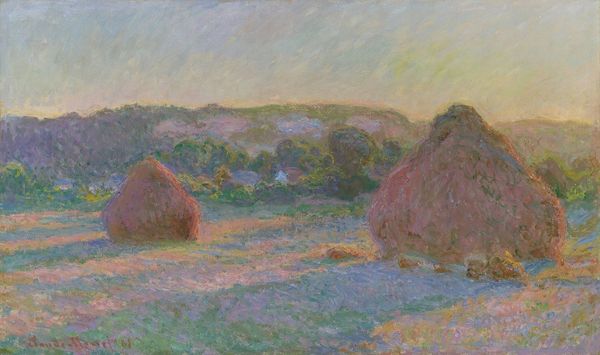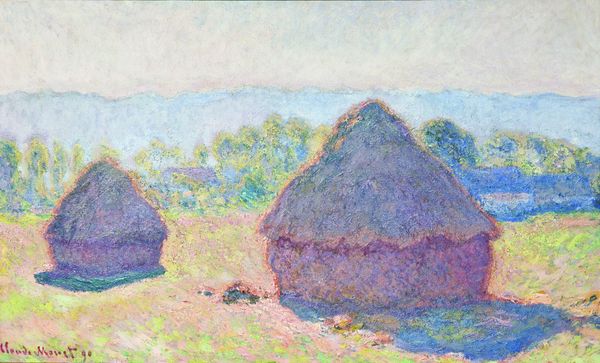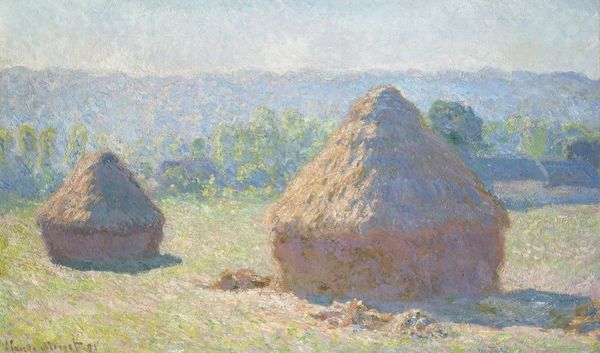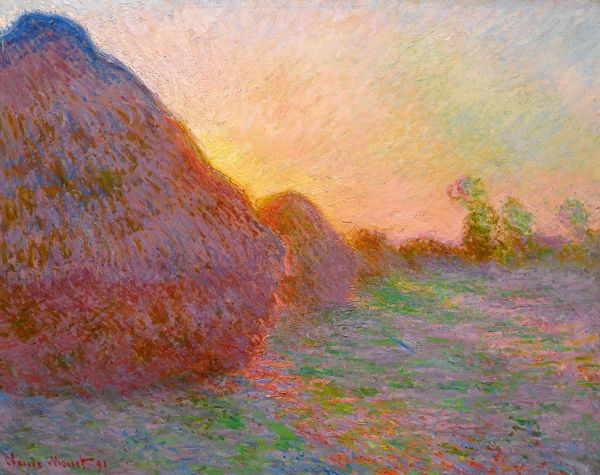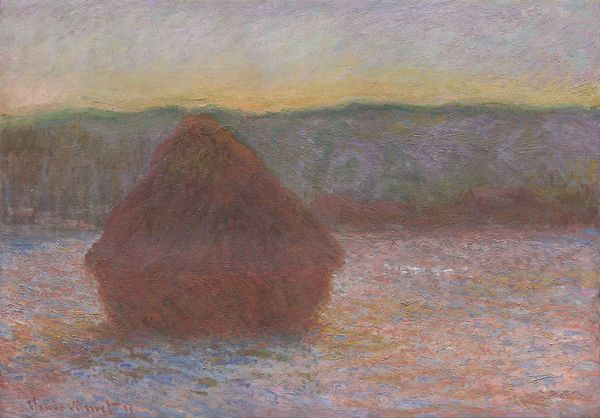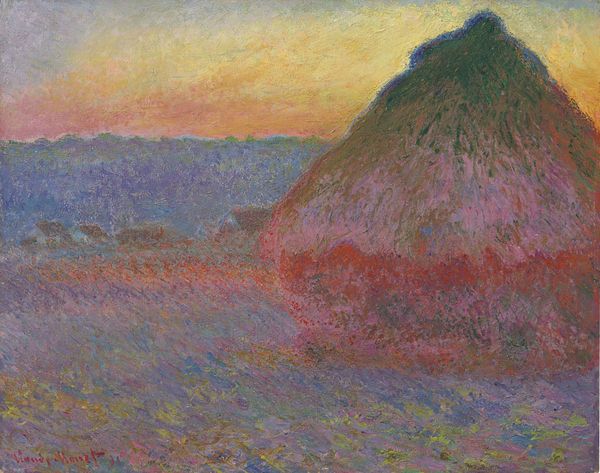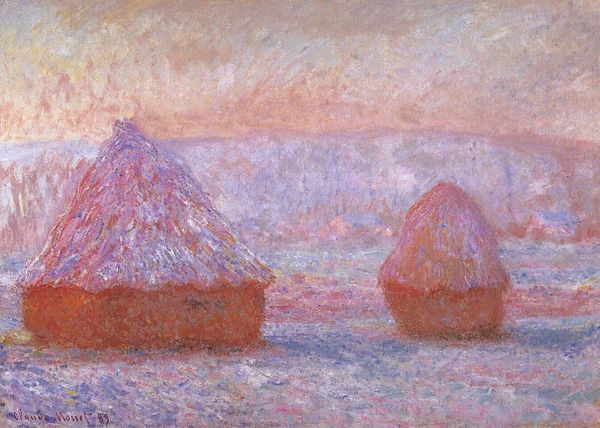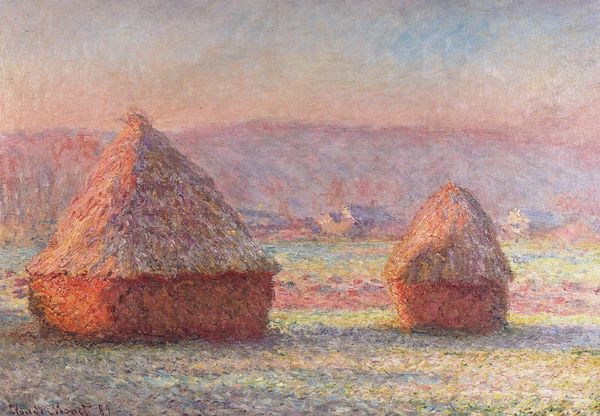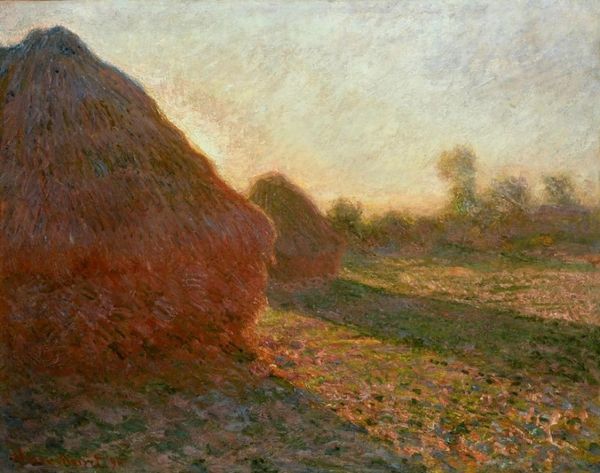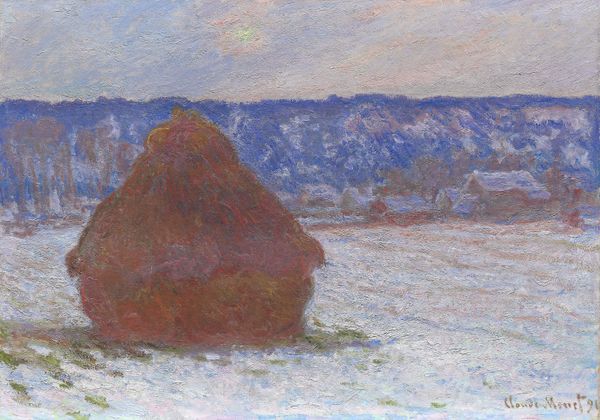
#
abstract painting
#
water colours
#
possibly oil pastel
#
coloured pencil
#
paint stroke
#
painting painterly
#
watercolour bleed
#
watercolour illustration
#
mixed medium
#
watercolor
Dimensions: 65 x 100 cm
Copyright: Public domain
Editor: Here we have Monet's "Stacks of Wheat (End of Day, Autumn)," painted in 1891, and currently residing at the Art Institute of Chicago. The hazy brushstrokes create such a dreamy and serene effect, but something about it feels a bit...industrial? How do you interpret this work? Curator: This is fascinating! What strikes me most is not the atmospheric perspective, but the raw labor embedded within. Think about it: these "stacks of wheat" represent not just picturesque scenery, but a whole system of agricultural production. It's not just about beauty, but about the realities of labor, the economic cycles tied to harvests. What materials and processes made the creation of the artwork possible, and of what natural elements does it portray the handling thereof? Editor: I never thought of it that way. So, you're saying the artistic beauty is almost a by-product of the social and economic structures that shaped the scene itself? Curator: Exactly. Monet isn’t just painting pretty haystacks; he’s capturing the physical manifestation of a specific mode of production at the end of the 19th century. Consider the labor invested, the ownership of land, the value extracted from the wheat itself. All this informs the very materiality of the painting. How does understanding this influence your appreciation of the image? Editor: It makes me consider the privilege of being able to appreciate it solely for its aesthetic qualities. Now, I am contemplating all of the processes required to make this painting. It goes far beyond just a nice landscape; there are layers upon layers of implications. I wonder how accessible those realities would have been to the average viewer then. Curator: Precisely! Monet may not have explicitly intended a political statement, but the material conditions are undeniably present in his depiction. Analyzing these structures is an invitation to understand more fully what it means to consider artistic interpretation in totality. Editor: This has completely shifted my perspective. Thank you for illuminating those crucial social contexts. I'll never see impressionism the same way again.
Comments
No comments
Be the first to comment and join the conversation on the ultimate creative platform.
